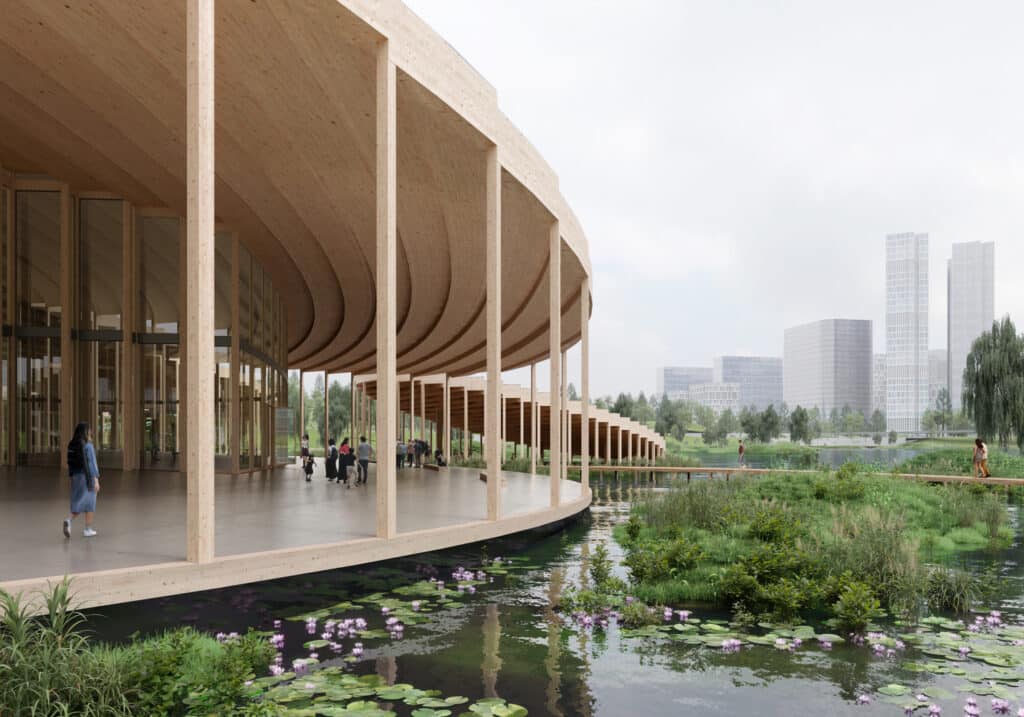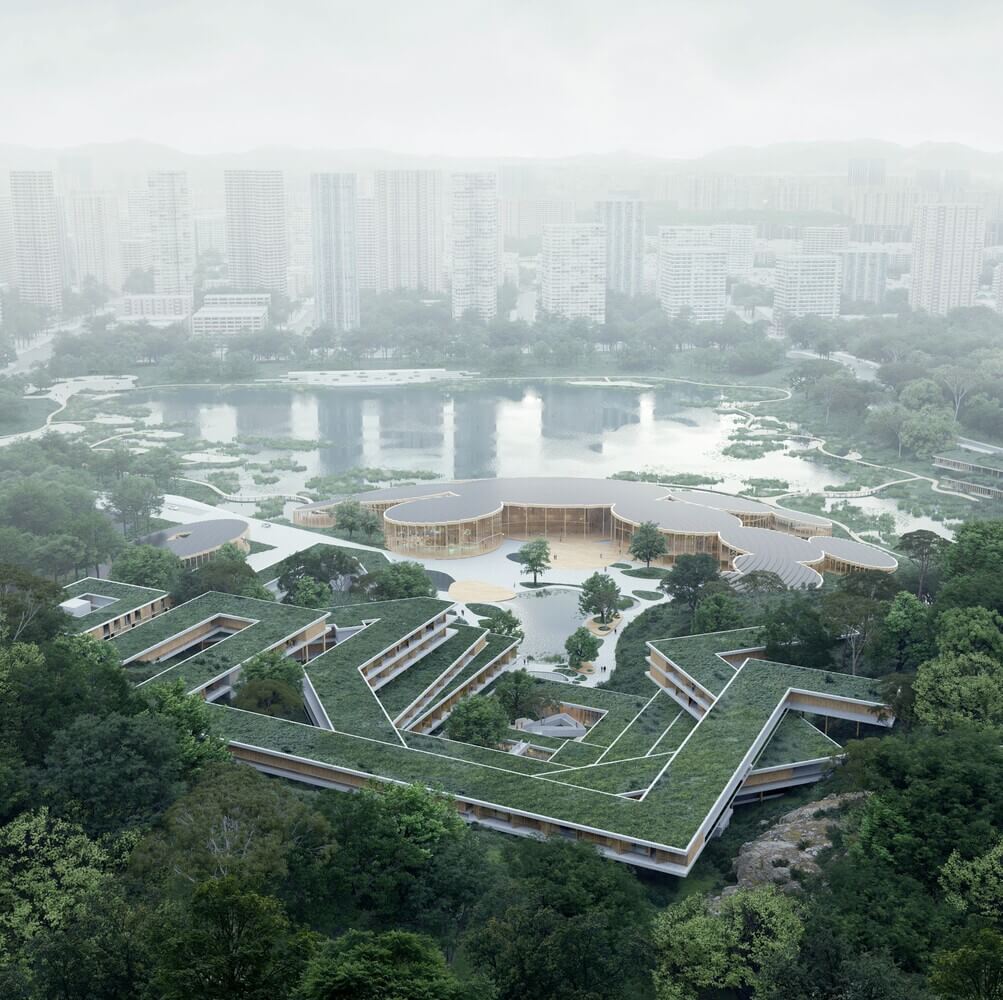A joint proposal of Dutch-based Mecanoo, Chinese-based Meng Architects and LOLA Landscape Architects has been selected as the winner of the Shenzhen Guangming Scientist Valley international design competition.
In January 2023, Design Boom reported that the Dutch-based Mecanoo, Meng Architects and LOLA Landscape were among the finalists that submitted a proposal through the Chinese state-run tender process.
Wood Central understands that the project – a combined proposal from the finalists – was selected from 173 entries and will establish the first comprehensive national science centre in Shenzhen, attracting researchers and innovative talent from around the world to create a world-leading research and innovation centre.
As seen in recently unveiled renderings, the design envisions a complex of intersecting timber-based structures and circular pavilions, which will serve as the focal public areas on the science campus.



The design embraces the unique natural features of the site, presenting an innovative concept called “Scientific Forest”.
Located in the middle of Lian Tang Reservoir, Lou Village Reservoir, and the valley space between them, Shenzhen Guangming Science Valley benefits from its prime location, surrounded by mountains and water, which offers an ecological advantage.
According to Chinese sources, the Guangming Science Valley is home to an ecology corridor built along the Maozhou River, with the new development to be constructed adjacent to the river and country parks nearby.
The new “Scientific Forest” will be part of an eventual 99 square kilometre precinct, surrounded by mountains, lakes and trees, with the eventual precinct to include a cluster of large-scale scientific facilities – specifically integrated science, education and technology facilities.
The design for the structure, which spans a massive 1.2 square kilometres, is the crown jewel of the precinct and will serve the larger scientific community from Guangdong to Hong Kong and Macao.

With its strategic location within an important scientific cluster and the natural elements surrounding it, the project will become a global symbol of scientific advancement and innovation.
The design team introduced the “Valley of Coexistence” concept in their winning proposal.
This concept revolves around the “temporary restoration and selective construction strategy,” with time as a vital element.
The plan incorporates a diverse program of public activities known as “1001 Forest Gardens” and three interdependent components: a shared circuit, a research centre, and a natural perimeter layer.

The objective is to encourage collaboration between the public and scientists, encouraging the growth of the forest and promoting coexistence within the valley.






